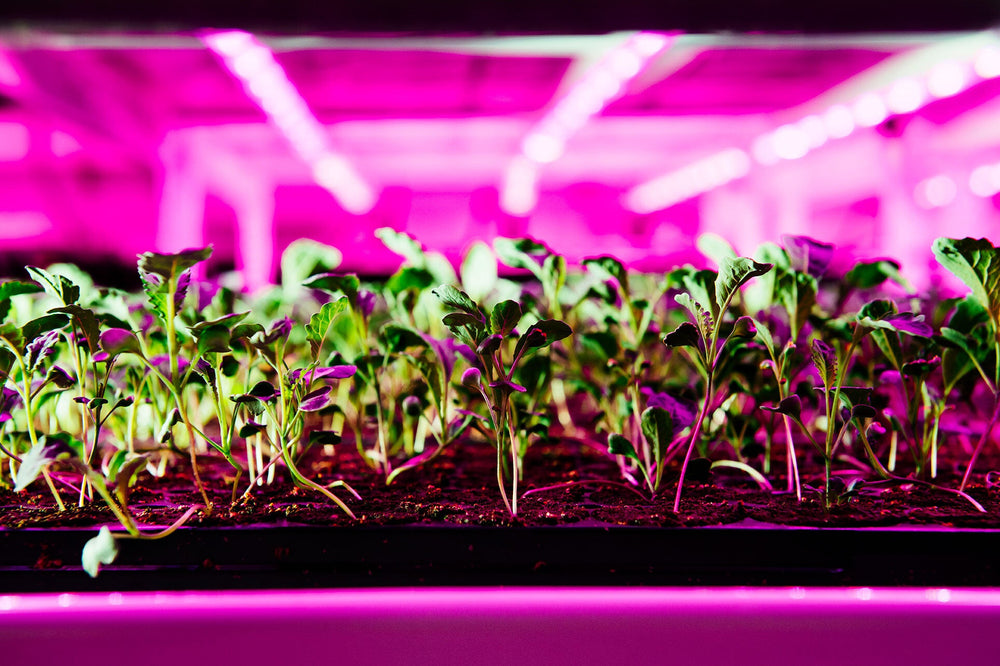
Kai, our leader of Hydroponic Technology, and Kelly, our Leader of Plant Health, came together to give us all a better idea of how light can impact a plant’s life cycle.

Light is a critical resource required by plants at nearly every stage of the life cycle. Throughout different stages, intensity, spectrum, and light duration play a critical role in the growth rate, flavor profile, plant morphology (shape).
The first stage of a plant's life cycle is germination, where the seed is placed in a growing substrate, generally in the dark. A dark, humid environment will trigger the germination of the seed, where the first root (radical) and first leaves (cotyledons) emerge from the seed. Many plants do not want light at this stage but some plants will require light to help them germinate.
After the germination stage, young plants need to be in a nursery, with low light intensity and low nutrient solution provided. At this nursery stage we maintain a lower level of light but shift the spectrum towards the blue wavelengths. This helps to ensure that plants don’t stretch and instead focus on root development and encouraging the plants to become sturdier. Blue dominant light recipes generally give the plant the impression that it is under direct sun, indicating that the plant does not need to concentrate energy on upward growth but rather focusing on building out roots and leaves.
We can also shift the spectrum towards the red wavelengths to alter the growth. Red light is generally interpreted by plants as an indication that the plant is underneath the canopy of other plants. This is because red wavelengths can travel further and penetrate further into plant canopies. In our growing environments, plants that receive red dominant light will interpret this as being underneath other plants and will focus upward growth to get above this perceived “canopy” to receive more full light. This is something we seek to avoid as we don’t want our plants to stretch.
Finally, light duration can play a key factor in plant growth. Plants have been adapting to life on earth for hundreds of millions of years and are deeply dependent on light seasonality and duration to indicate how to behave during periods of the year. So how do plants perceive this? In the northern hemisphere, is light duration getting longer? Summer must be around the corner. Are the days getting shorter with less light? Winter must be approaching. With this information plants will trigger within themselves processes to increase or decrease growth rates, to start flowering, or to get ready to endure a cold winter. Our crops don’t have as many environmental factors to consider, rather we control the light duration to avoid triggering different growth stages like flowering. Instead we use light duration to increase plant growth without increasing the light intensity. This protects our crops from high light which is a problem in a vertical farm when LED grow lights are very close to the plant canopies.
